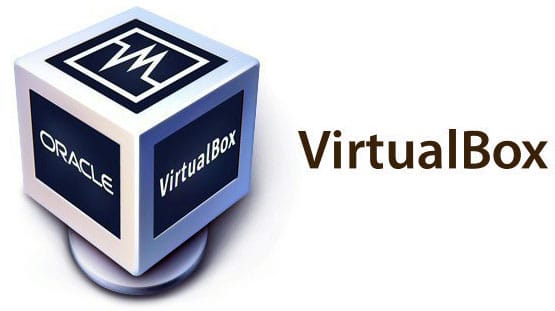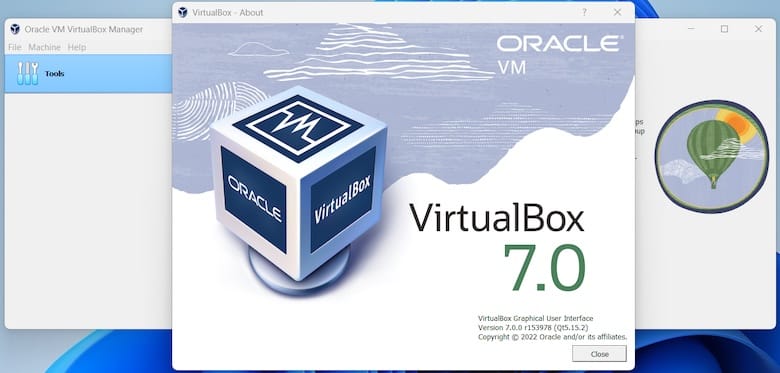How To Install VirtualBox on Fedora 42

VirtualBox stands as one of the most powerful open-source virtualization platforms available today, enabling users to run multiple operating systems simultaneously on a single machine. For Fedora 42 users seeking to test software, develop applications, or simply explore other operating systems without dual-booting, VirtualBox presents an ideal solution. This comprehensive guide will walk you through installing VirtualBox 7.1.8 on Fedora 42, optimizing its configuration, and resolving common issues you might encounter along the way.
Prerequisites
Before beginning the installation process, it’s essential to ensure your system meets the necessary requirements for running VirtualBox efficiently.
System Requirements
- Processor: A 64-bit multi-core processor with virtualization technology support (Intel VT-x or AMD-V)
- Memory: Minimum 2GB RAM, though 4GB or more is recommended for optimal performance
- Storage: At least 25GB of free disk space for VirtualBox and virtual machines
- Network: Stable internet connection for downloading packages
- User Permissions: Administrator (sudo) access on your Fedora system
Verifying Hardware Compatibility
To confirm your processor supports virtualization technology:
egrep -c '(vmx|svm)' /proc/cpuinfoAny result greater than 0 indicates your processor supports virtualization. If virtualization is disabled, you’ll need to enable it in your system’s BIOS/UEFI settings.
Preparing Your Fedora 42 System
Proper preparation ensures a smooth installation process and helps avoid common pitfalls.
Updating Your System
Always start with an updated system to prevent compatibility issues:
sudo dnf -y upgrade
sudo rebootThis updates all packages and applies any kernel changes that might affect VirtualBox installation.
Backing Up Important Data
Although installing VirtualBox is generally safe, it’s always prudent to back up important data before making system changes. Create backups of critical files to external storage or cloud services before proceeding.
Checking Kernel Version
Verify your current kernel version with:
uname -rThis information will be valuable if you encounter kernel module issues later.
Installing Required Dependencies
VirtualBox requires several dependencies to function correctly on Fedora 42.
Development Tools and Kernel Headers
Install the development tools package group and kernel-related packages:
sudo dnf -y install @development-tools
sudo dnf -y install kernel-headers kernel-devel dkms elfutils-libelf-develThese packages are essential for building the VirtualBox kernel modules.
GUI Libraries and Additional Dependencies
For the VirtualBox graphical interface:
sudo dnf -y install qt5-qtx11extrasVerify that all dependencies installed correctly before proceeding.
Adding the VirtualBox Repository
While there are multiple installation methods available, using the official VirtualBox repository ensures you get the authentic, up-to-date version.
Importing the VirtualBox GPG Key
First, import Oracle’s GPG key to verify package authenticity:
sudo rpm --import https://www.virtualbox.org/download/oracle_vbox_2016.ascThis step ensures your system can verify the digital signature of VirtualBox packages.
Creating the Repository Configuration
Add the VirtualBox repository to your system:
sudo wget -P /etc/yum.repos.d/ https://download.virtualbox.org/virtualbox/rpm/fedora/virtualbox.repoThis configuration file tells DNF where to find the VirtualBox packages.
Updating Repository Information
Refresh your package database to include the new repository:
sudo dnf check-updateInstalling VirtualBox 7.1.8
With preparations complete, you can now install VirtualBox using one of two methods.
Method 1: Installing from Repository (Recommended)
The simplest approach is to install directly from the repository:
sudo dnf install VirtualBox-7.1This command will download and install VirtualBox 7.1.8 along with any remaining dependencies.
Method 2: Installing from Downloaded RPM Package
Alternatively, you can download and install the RPM package manually:
1. Download the VirtualBox RPM for Fedora:
wget https://download.virtualbox.org/virtualbox/7.1.8/VirtualBox-7.1-7.1.8_164728_fedora40-1.x86_64.rpm2. Install the downloaded package:
sudo dnf install ./VirtualBox-7.1-7.1.8_164728_fedora40-1.x86_64.rpmThis method works well when you need a specific version or when repository access is limited.
Verifying the Installation
After installation completes, verify that VirtualBox installed correctly:
vboxmanage --versionThe command should return “7.1.8” or your installed version.
Post-Installation Configuration
Several important configuration steps remain to ensure VirtualBox functions properly.
Adding Your User to the vboxusers Group
To access USB devices and other VirtualBox features, add your user to the vboxusers group:
sudo usermod -aG vboxusers $USERLog out and log back in for this change to take effect.
Configuring VirtualBox Kernel Modules
Ensure the VirtualBox kernel modules are properly built and loaded:
sudo /usr/lib/virtualbox/vboxdrv.sh setupThis command compiles and loads the necessary kernel modules for VirtualBox.
Setting Up Autostart (Optional)
If you want VirtualBox services to start automatically at boot:
sudo systemctl enable vboxdrvNote that this might slightly increase your system’s boot time.
Installing the VirtualBox Extension Pack
The VirtualBox Extension Pack adds essential features like USB 3.0 support, disk encryption, and boot PXE ROM support.
Downloading the Extension Pack
Download the Extension Pack that matches your VirtualBox version:
VER=$(vboxmanage -v | cut -d 'r' -f 1)
wget https://download.virtualbox.org/virtualbox/$VER/Oracle_VM_VirtualBox_Extension_Pack-$VER.vbox-extpackEnsure you download the version that exactly matches your installed VirtualBox version.
GUI Installation Method
- Open VirtualBox from your applications menu
- Navigate to File → Preferences → Extensions
- Click the “Add” button (plus icon)
- Browse to the downloaded Extension Pack file and select it
- Follow the prompts and accept the license agreement when prompted
Command-Line Installation Method
Alternatively, install via command line:
sudo vboxmanage extpack install Oracle_VM_VirtualBox_Extension_Pack-*.vbox-extpackThis method is useful for scripted or remote installations.
Verifying Extension Pack Installation
Confirm the Extension Pack installed correctly:
vboxmanage list extpacksThe output should display information about the installed Extension Pack, including its version and enabled features.
Creating Your First Virtual Machine
With VirtualBox installed and configured, you can create your first virtual machine.

Basic VM Creation Process
- Launch VirtualBox from the applications menu
- Click “New” to start the VM creation wizard
- Name your VM and select the operating system type and version
- Allocate RAM (start with at least 2GB for most modern operating systems)
- Create a virtual hard disk (VDI format is recommended)
- Configure the virtual disk size (minimum 20GB for most OS installations)
- Complete the wizard and start your new VM
Memory Allocation Recommendations
- Windows VMs: 2GB minimum, 4GB+ recommended
- Linux VMs: 1GB minimum, 2GB+ recommended
- macOS VMs: 4GB minimum, 8GB+ recommended
Network Configuration Basics
VirtualBox offers several networking modes:
- NAT: Simplest option, allows VMs to access the internet but not directly accessible from the network
- Bridged: VM appears as a separate device on your network
- Host-only: Communication only between the host and VMs
- NAT Network: Similar to NAT but allows VMs to communicate with each other
Troubleshooting Common Issues
Even with careful installation, you might encounter some challenges. Here are solutions to common problems.
Kernel Module Loading Failures
If you see “vboxdrv kernel module is not loaded” errors:
sudo dnf reinstall kernel-devel-$(uname -r)
sudo /usr/lib/virtualbox/vboxdrv.sh setupThis rebuilds the kernel modules for your current kernel version.
Secure Boot Conflicts
Fedora 42 with Secure Boot enabled may prevent VirtualBox kernel modules from loading. You have two options:
- Disable Secure Boot in your BIOS/UEFI settings
- Sign the VirtualBox kernel modules with a custom key:
# Generate a signing key
openssl req -new -x509 -newkey rsa:2048 -keyout MOK.priv -outform DER -out MOK.der -nodes -days 36500 -subj "/CN=VirtualBox/"
# Register the key with UEFI
sudo mokutil --import MOK.der
# After reboot, sign the modules
sudo /usr/src/kernels/$(uname -r)/scripts/sign-file sha256 MOK.priv MOK.der $(modinfo -n vboxdrv)This allows the modules to load while maintaining Secure Boot protection.
USB Device Access Issues
If USB devices aren’t appearing in your VMs:
- Ensure you’re a member of the vboxusers group
- Install the Extension Pack if you haven’t already
- Add USB filters in the VM settings
- For persistent USB permission issues, try:
sudo chmod -R 777 /proc/bus/usbThis is a temporary solution; adding proper udev rules is preferable for a permanent fix.
Network Connectivity Problems
For network-related issues:
- Try different network adapter types in VM settings
- Reset the VirtualBox network service:
sudo systemctl restart vboxdrv- For NAT network issues, create a new NAT network with a different name and IP range.
Updating VirtualBox
Keeping VirtualBox updated ensures optimal performance and security.
Checking for Updates
Check for available updates:
sudo dnf check-update VirtualBox-7.1Update Process
Update VirtualBox to the latest version:
sudo dnf update VirtualBox-7.1When updating, remember to also update the Extension Pack to the matching version.
Version Compatibility Considerations
Major version updates might require additional configuration. Always back up your virtual machines before major upgrades, and consider exporting them to OVA format for added safety.
Performance Optimization Tips
Maximize your VirtualBox experience with these optimization suggestions.
System-Level Optimizations
For better overall performance:
# Disable kernel mitigations (security trade-off)
sudo grubby --update-kernel=ALL --args="mitigations=off"
# Disable NetworkManager-wait-online for faster boot
sudo systemctl disable NetworkManager-wait-online.serviceThese changes can significantly improve performance, particularly on multi-threaded systems.
Virtual Machine Optimizations
- Allocate multiple CPU cores to CPU-intensive VMs
- Enable nested paging in VM processor settings
- Use dynamically allocated storage for efficient disk space usage
- Install Guest Additions inside VMs for better integration and performance
- Disable unnecessary VM features when not needed (audio, USB, etc.)
Congratulations! You have successfully installed VirtualBox. Thanks for using this tutorial for installing the VirtualBox on Fedora 42 Linux system. For additional help or useful information, we recommend you check the VirtualBox website.